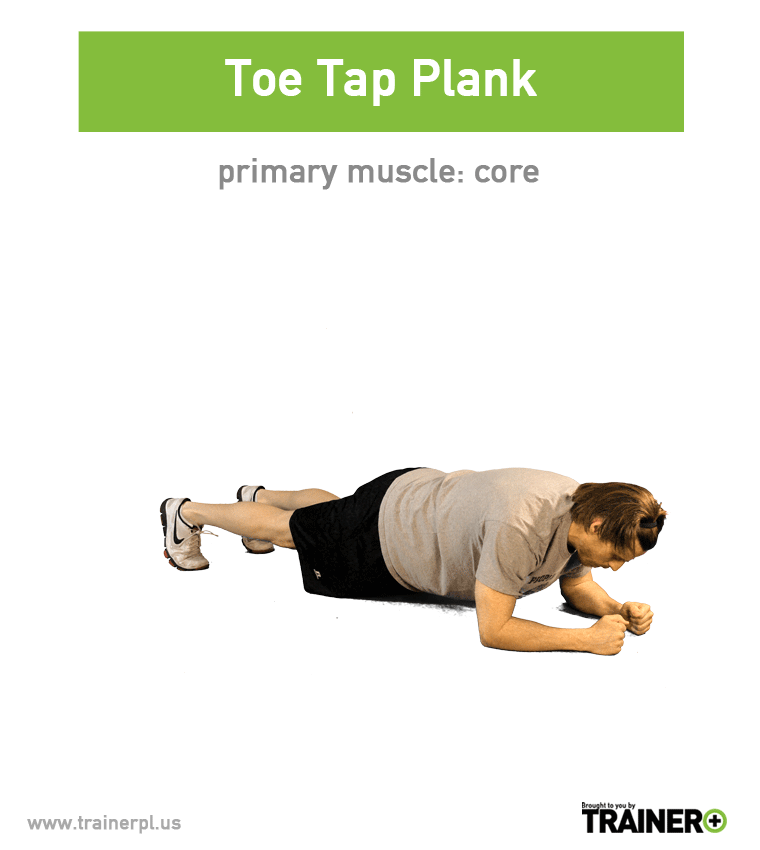STABLE DYNAMIC PLANKS
primary muscle: core
supporting muscles: abs, low back, hips
The plank or front hold is the most important exercise for your core as it engages all of the core muscles to build both strength and stability through your whole body. Keeping a straight line between ankles, knees, hips and shoulders promotes the type of stable strength used through those joints, and more importantly, your torso, in everyday movements like sitting, standing, walking, etc. This exercise not only makes all of the muscles in your torso have to work to maintain the alignment (abs, low back, oblique, transverse abdominus), but also involves the shoulder and hip girdle to bare the weight, the other key body parts that make up the core. Adding movement or dynamicism makes all of the muscles involved have to work harder to maintain body alignment as the load shifts throughout the movement, helping increase functional strength/stability.
Toe Tap Plank
The easiest version of a dynamic plank, keeping the right angles and muscle engagement in holding the straight line between ankles, knees, hips and shoulders while adding some movement and shift in balance. This variation allows you to keep all four points close or on the ground while shifting weight from side to side and thus engaging the transverse muscles and hip stability to balance.
Alternating Arm Raise Plank
This variation of the dynamic plank introduces an added element of balance in having to hold your weight on three points with the upper body weight on one arm, adding engagement and difficulty for the scapular, the foundation of all of your arm strength and stability. Use this exercise for a way to add scapular stability (also from holding the arm up) to the challenge and core engagement to keep the straight body line while shifting weight from side to side with the upper body.
Alternating Leg Raise Plank
Alternating the legs makes the extra element of balance on three points more of a test for the hips in keeping the straight body line while shifting body weight from side to side, especially with the leg held above the body. This exercise is a good way to add hip stability to the dynamic plank as well as added engagement for the lower back, glute and hamstring (rear muscles around the hip girdle) to hold the leg in the air.
Elbows up to Hands Plank
This exercise adds the increased challenge of body weight shifting longitudinally (from head to toes) while maintaining the straight body line, increasing the demand throughout the core and hips through the movement. Pressing up and down with the arms and having to shift positions also adds an increased challenge to both scapular stability and strength, while also engaging the chest and shoulders to stabilize through the movement.
Alternating Opposite Arm & Leg Raise Plank
Raising the opposite arm and leg at the same time makes for the most difficult way to balance, now on 2 points, while still holding a straight body line, which not only makes for increased scapular and hip stability being worked, but also the transverse to keep the body horizontal. Raising the opposite arm and leg (bird-dog position) also makes for an increased challenge for the rear hip chain (low back, glute, hamstring) and muscles across the back to hold the leg and arm up.
These exercises come from our exercise library at Trainer+, a web and mobile platform for personal trainers.
Are you digitally tracking every set and rep that your clients do with or without you?








